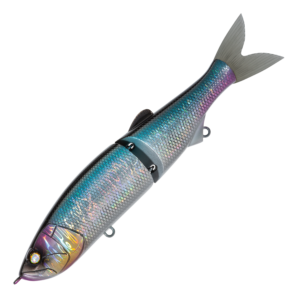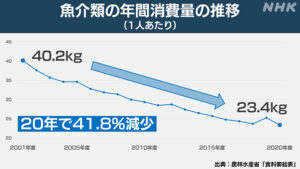Haruhiko Murakami, a Genius of Fishing
Neko rig, Down-shot rig and the small rubber jig (Smo-Raba in Japanese). These are well known not only in Japan but also in other countries. It shows that these are well proven methods to catch the largemouth bass.
Actually, it is said that these are said to be inventions of Mr. Haruhiko Murakami. From it, you can imagine that he is the person who can produce new products out of his rich experience of fishing.
In this article, I would like to introduce about Mr. Murakmi and try to show you what made him invent these famous rigs.
Neko rig
Neko rig is one rigging of a soft lure, which has a worm and a hook (sometimes with a nail sinker inside the worm.) This rig is one of the most popular rigs in Japanese tough bass fishing scenes.
The word Neko comes from a Japanese word “Nekosogi,” which means to get all the things of a place in Japanese. For those who interested in the original word, you can copy and paste these words “meaning of 根こそぎ.”
According to a Japanese magazine’s article (Lure Magazine, November issue 2017,) Mr. Murakami came up with this idea. In the late 1980’s, when he was about 20 years old, he found the reason why the split shot rig can get more bass. What attracted fish was the slow sinking, featherly slow sinking, action. At the same time, he experienced many short bites in which the bass bit only the end of the worm. Then he tried to hook the worm in the middle to avoid these kinds of short bites.
To keep the fluffy action of the worm, the best is to go without any additional weight, but you cannot cast it without any sinkers. Young Mr. Murakami’s solution was to embed the sinker inside of the worm’s body. This invention allowed him to present the worms in the water lively, while having the added sinker weight. With this idea, he could catch a lot of bass then.
As it caught fish so well that he kept it his secret for a while. Because he wanted to keep it published, he invented other rigs, which would be also popular, small rubber jigs and Tsunekichi rig to show his techniques in a fishing magazine.
Rigs of Mr. Murakami
He was born in 1968, in Osaka. Taking advantage of the close distance to the Biwako lake from his home, he fished a lot there. He had been a bass fishing enthusiast while he had a job as a chef. It is quite imaginable that his skills as a chef were superb, looking at his current creations. Gradually, he was exposed to some fishing magazines from the end of 1980’s. He was not only a good producer and inventor of the products but also a good entertainer. It attracted people, as well as his fishing technique inspired fans.
His approach in bass fishing was different from the majority of that era. The major media or the key information was coming from the bass fishing tournament in the 1990’s in Japan. But Mr. Murakami was presenting his skills and products not from the tournament point of view but from the non-competition shore fishing viewpoint. It meat that his skill was accessible to normal anglers, who enjoys fishing from the shore, and they could easily get their fish from just imitating what Mr. Murakami was showing.
In the 1990’s, he made the brand, “Tsunekichi,” and made a lot of famous products. The name Tsunekichi is from Japanese words meaning lucky for all the time. One of the well known products is the Tsunekichi rig, or down-shot rig.
Originally, when it was invented, this rig was called with the name, Tsunekichi, but as this rig got more popular, it turned out to be called a down-shot rig, in the middle of 1990’s.
The rubber skirt was applied into the lures by Mr. Fred Arbogast in 1937 (reference page.) And it was natural to use it in the place of feathered jigs, to become a rubber jig. This came to Japan and it turned into the small rubber jig (Smo-Raba,) in the hand of Mr. Murakami.
He made it small. You can say so, but there were many factors to consider, such as the thickness, buoyancy, and length of rubbers, in addition to the sinker-hook balance. Currently, the rubber jig up to 5 grams is called Smo-Raba.
After he left the Tsunekichi company, he established the brand called Issei, bringing his spirit into the products.
Philosophy
Most of his lures carry the concept to catch more fish from the shore, and to show the joy of fishing to more anglers.
As you can see from the above inventions, his approach had been in the direction of finesse style. I would like to quote Mr. Murakami’s comments on his approach, taken from the Japanese fishing magazine (reference site link.)
“There are no lures you can call a micro-bait. The proper lure sizes are different depending on the size of target fish. Understanding it, what is good with small lures is to use thinner lines. It does not work to use small lures with thick fishing lines. The advantage of using the thinner line is to keep presenting your lures (without any unnecessary pressures to fish.)”
“I had a lot of experience catching amazingly big bass with smaller worms. For example, experiences from the fishing, in May, after spawning, or in the night fishing from the shore in February. Another decisive factor is the baitfish. I was fishing in Hibarako lake until yesterday. There, the bass were eating Japanese smelts of around 4 cm. I felt that match-the-bait can raise their biting actions. Also the small lures work when the fish is facing down to eat shrimps or gobies. One more aspect in the small lures is that the lure moves without any sounds, diminishing its own existence. The opposite approach is the big bait. Well-fished individuals simply came by the presentation of it. It is not happening as fish are eating large baitfish.”
In these comments, you can interpret the core idea of Japanese finesse style, which Mr. Murakami has been trying to realize this. Small lures, thin lines, and quiet presentation. It is convincing that his rigs are well coordinated to catch more fish from the shore.

